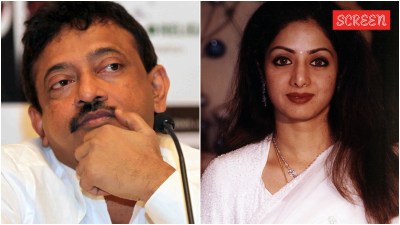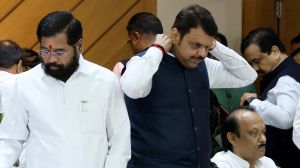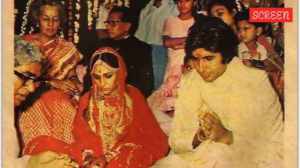Champakam Dorairajan always wanted to be a doctor – an unusual dream for married women in the 1940s. So when a law, in the form of a government General Order got in the way, she decided to challenge it.
In 1948, the Madras government introduced the Communal General Order, widely referred to as the Communal G.O., which apportioned admissions to educational institutions based on caste — out of every 14 seats, 6 were to be allotted to non-Brahmin (Hindus); 2 to Backward Hindus; 2 to Brahmins; 2 to Harijans; 1 to Anglo-Indians and Indian Christians, and 1 to Muslims.

 Incidentally, Champakam’s husband’s business, Dollar & Company, a pharma manufacturing unit, at that time was adjacent to the renowned Row & Reddy, a Madras-based law firm in the iconic Andhra Insurance Building on Thambuchetty Street in Chennai.
Incidentally, Champakam’s husband’s business, Dollar & Company, a pharma manufacturing unit, at that time was adjacent to the renowned Row & Reddy, a Madras-based law firm in the iconic Andhra Insurance Building on Thambuchetty Street in Chennai.
On learning that as a Brahmin woman, “she had little or no chance of being admitted” to a medical college, Champakam moved the Madras High Court. Her case was that the government’s policy violated her right to equality. Srimathi Champakam Dorairajan And Anr. v The State of Madras became the first case to test if the Constitution permitted caste-based reservations for admission to educational institutions.
In July 1950, the Madras HC struck down the G.O. but the State challenged the order in the Supreme Court. On April 9, 1951, a full bench of five judges of the Supreme Court struck down the law as unconstitutional, declaring that the classification in the law “constituted a clear violation of the fundamental rights guaranteed to the citizen”.
“The classification in the Communal G.O. proceeds based on religion, race and caste. In our view, the classification made in the Communal G.O. is opposed to the Constitution…,” the SC had ruled.
The Supreme Court ruling prompted the government to introduce changes in the Constitution through the First Amendment that expressly provided for affirmative action in higher education – until then, the Constitution only provided for reservation in public employment. The case also ignited a lasting debate on merit, equality, and discrimination — one that remains relevant to this day.
Born in 1915, Dorairajan, with a Bachelor’s degree in Physics and Chemistry from the University of Madras in 1934, hoped to become a doctor, but “financial difficulties” led to her becoming a teacher instead.
Story continues below this ad
In its ruling, the SC quoted from her affidavit and said that “it does not appear that the petitioner had actually applied for admission in the Medical College” but “that on inquiry, she came to know that she would not be admitted to the College as she belonged to the Brahmin community.”
Incidentally, her husband’s business, Dollar & Company, a pharma manufacturing unit, at that time was adjacent to the renowned Row & Reddy, a Madras-based law firm in the iconic Andhra Insurance Building on Thambuchetty Street in Chennai. Old timers in Row & Reddy recall Mr Dorairajan occasionally dropping in for a cup of coffee and a chat with the lawyers at the firm. “Mrs Dorairajan, dressed in a nine-yard saree, used to visit her husband sometimes,” says 88-year-old NGR Prasad, the managing partner at the firm.
 On April 9, 1951, a full bench of five judges of the Supreme Court struck down the law as unconstitutional, declaring that the classification in the law “constituted a clear violation of the fundamental rights guaranteed to the citizen.” (Express illustration by Abhishek Mitra)
On April 9, 1951, a full bench of five judges of the Supreme Court struck down the law as unconstitutional, declaring that the classification in the law “constituted a clear violation of the fundamental rights guaranteed to the citizen.” (Express illustration by Abhishek Mitra)
Perhaps it was this familiarity with lawyers and the legal system that prompted Dorairajan to approach the court. Renowned lawyers V V Srinivasa Iyengar and Alladi Krishnaswamy Iyer, who was also a member of the Constituent Assembly and the provisional Parliament which introduced the First Amendment, argued against the government.
Speaking to The Indian Express, Dorairajan’s daughter, Professor Geetha Durairajan, who taught at the English and Foreign Languages University in Hyderabad, says that though her mother could not be a doctor, she used her education in other ways. “My father supported her dream but due to the policy at that time, she could not be admitted. By the time the ruling came, she had a child and was no longer in a place where she could commit the time and effort needed to study medicine. She was a housewife with five children but she taught us math, physics, and everything else and used her education in other ways.”
Story continues below this ad
“My mother passed away in 1981 when I was about 25 years old. My memories of the case are only from a few conversations in passing with my parents, but I read up on it as an adult,” Durairajan adds.
In his seminal book, Working a Democratic Constitution, historian Granville Austin wrote that the Constitution at the time of its enactment had over “two dozen articles providing for the compensatory treatment for disadvantaged citizens or for protecting them from discrimination.”
While Article 14 recognises the right to equality, Article 15 prohibits discrimination on the grounds of religion, race, caste, sex or place of birth, Article 16(4) provides for reservation in public employment in favour of any backward class of citizens, and Article 17 provides for the abolition of untouchability. However, since there was no express provision providing for reservation in educational institutions, the government pleaded with the Court to look at the “letter and spirit of the Constitution”.
Following the setback in the Supreme Court, the government brought in the First Amendment, introducing Article 15(4) to the Constitution to allow the state to make laws or “any special provision for the advancement of any socially and educationally backward classes of citizens or for the Scheduled Castes and the Scheduled Tribes”.
Story continues below this ad
Another conclusion of the court in the ruling — on the primacy of fundamental rights over directive principles of state policy — was also watered down over the years. The government had argued that Article 46 of the Constitution, which is a part of directive principles, mandates the promotion of the educational and economic interests of Scheduled Castes, Scheduled Tribes and other weaker sections. However, the court said that the provisions “expressly made unenforceable by a court, cannot override” fundamental rights. In later years, the court has allowed encroachment of rights to give effect to directive principles. For example, Article 48 that prohibits the slaughter of cows was balanced with the right to carry on trade and occupation and social welfare measures were balanced with property rights.
“Champakam Dorairajan ruling shows that the judiciary started from a fundamentally wrong place as if we were a casteless society. That reservation under Article 15, which was introduced through an amendment, was treated as an exception to the rule of equality in Article 14 for many decades even after the ruling,” former Madras High Court judge K Chandru told The Indian Express.
In later years, the court’s textual reading of the Constitution was criticised and corrected. In the 2024 ruling allowing sub-classification of quota, then Chief Justice of India D Y Chandrachud termed the approach of the SC in Champakam’s case a “formalistic and reservation-limiting approach.”
Dorairajan’s case perhaps had more to do with realising her personal goals rather than making a case against affirmative action, but the court’s ruling is a stark reminder of the starting point from which the law on equality has evolved.
Story continues below this ad
“I do feel proud that her case is a part of constitutional history and that my father supported her,” Geetha Durairajan says.



 Incidentally, Champakam’s husband’s business, Dollar & Company, a pharma manufacturing unit, at that time was adjacent to the renowned Row & Reddy, a Madras-based law firm in the iconic Andhra Insurance Building on Thambuchetty Street in Chennai.
Incidentally, Champakam’s husband’s business, Dollar & Company, a pharma manufacturing unit, at that time was adjacent to the renowned Row & Reddy, a Madras-based law firm in the iconic Andhra Insurance Building on Thambuchetty Street in Chennai. On April 9, 1951, a full bench of five judges of the Supreme Court struck down the law as unconstitutional, declaring that the classification in the law “constituted a clear violation of the fundamental rights guaranteed to the citizen.” (Express illustration by Abhishek Mitra)
On April 9, 1951, a full bench of five judges of the Supreme Court struck down the law as unconstitutional, declaring that the classification in the law “constituted a clear violation of the fundamental rights guaranteed to the citizen.” (Express illustration by Abhishek Mitra)





























